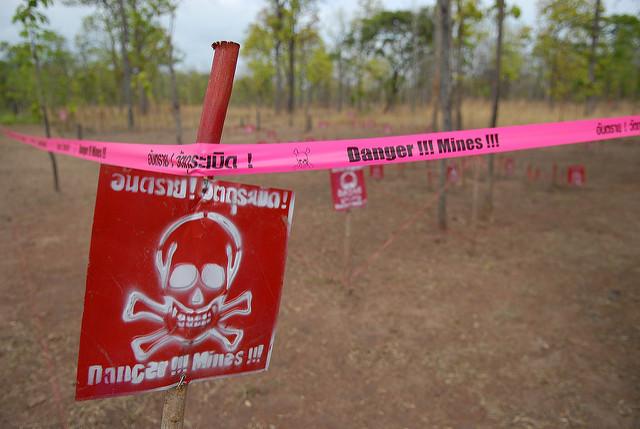
The war between Colombia and the FARC rebel group is over. After four years of negotiating, on 26 September in Cartagena both sides shook hands and bid farewell to the longest-running conflict in the western hemisphere.
Peace in Colombia has bordered on being unimaginable for 52 long and bloody years. But at last, it’s a reality for its 48 million resilient people.
Still, why should this matter to Australia?
There are two answers. The first is essentially self-interest. Australia has its eyes set on Colombia, both economically and diplomatically. Australia’s recent diplomatic outreach efforts are exploring the feasibility of expanding trade relations via a free trade agreement between the two countries. And there’s a strong desire to establish a resident embassy in Colombia’s capital, Bogotá.
But there’s another more altruistic reason. Landmines are a global issue. Every year, they kill 15,000 to 20,000 people—most of them children, women and the elderly, and severely injure countless more in some 78 countries. Australia’s long played an active role in reducing the number of deaths and injuries from landmines, cluster munitions and other explosive remnants of war (ERW). Australia’s commitment to a world free of landmines has taken demining assistance to dozens of countries across the Asia–Pacific, Middle East and Africa. That has earned the nation a well-deserved reputation as a good international citizen. But the landmine problem isn’t exclusively confined to those regions and, despite the role that anti-mine action has played in Australia’s foreign policy, its efforts have so far overlooked Latin America.
Perhaps surprisingly, Latin America hosts the second most mine-affected country in the world, the number one source-country of new landmine victims and the country with the second-largest internally displaced population (IDPs) in the world. Colombia holds the dubious distinction of holding each of those titles.
Internal conflict—mainly but not exclusively with FARC—left a horrific toll, devastated an otherwise vibrant country and left a deadly legacy. 693 of Colombia’s 1,123 municipalities have reported the presence of landmines and ERW contamination. And yet the full scope of the problem in Colombia is little known: landmines have claimed more than 11,000 victims in Colombia since the early 1990s.
As rural areas once controlled by FARC start to open up, landmines and ERW will remain a barrier for thousands of FARC combatants —yet to be demobilised— to reintegrate into civilian life in rural areas and for over six million IDPs to have a fresh start. Creating favourable security conditions to guarantee victims and pardoned perpetrators a safe return home is vital. FARC rebels have agreed to work alongside Colombia’s military to remove landmines and other explosive devices. This will provide Colombian authorities with a golden opportunity to make presence, build governance, and bring stability in FARC-controlled areas where none previously existed.
But getting the endgame right in Colombia doesn’t come with the stroke of a pen, and a big effort will be required to rid the country of landmines. Diplomatic and financial support is needed. That’s where Australia might come in. In a region where it’s hoping to open doors, its expertise in demining can work to the benefit of both sides.
Of course it comes at a cost and Australia —like many other nations—is struggling to maintain previous levels of funding to anti-mine action. But in the Foreign Minister’s own words, ‘Australia’s candidacy to the UNHRC 2018-2020 is a measure of our longstanding commitment to promoting and protecting human rights, both in Australia and around the world’.
The loss of lives and limbs, also means the loss of livelihoods and the loss of economic productivity. If a free trade agreement with Colombia and an embassy in Bogota are to become a reality, anti-mine action in Colombia could be a powerful tool for Australia’s bridge building efforts.